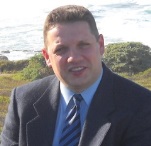Scientific Program

Denis Stanescu
Grenoble Institute of Technology/GIPSA-lab, France
Title: On the existing and new potential methods for Partial Discharge source detection
Biography:
Cornel Ioana received the Dipl.-Eng. degree in electrical engineering from the Romanian Military Technical Academy of Bucharest, Romania, in 1999 and the M.S. degree in telecommunication science and the Ph.D. degree in the electrical engineering field, both from University of Brest-France, in 2001 and 2003, respectively. Between 2003 and 2006, he worked as Researcher in ENSTA-Bretagne, Brest, France. Since 2006, he has been an Associate Professor-Researcher with the Grenoble Institute of Technology/GIPSA-lab. His current research activity deals with the signal processing methods adapted to the natural phenomena. His scientific interests are nonstationary signal processing, natural process characterization, underwater systems, distributed sensing and artificial intelligences approaches applied to the surveillance of power systems and natural environments.
Abstract
Energy transmission and distribution networks face an increase in the number of electrical cables used. In such networks the occurrence of defaults given by the type of used cable, the structure and network capacity, voltage levels, and related environmental conditions is inevitable. The difficulties of predictive maintenance of power grids are related to the large spread of electrical infrastructures and the definition of early warning indicators. Such indicator is the partial discharge activities very informative about the rising insulation problems of electrical materials. The monitoring of such phenomena is nowadays important field in the power transmission and distribution. The purpose of this paper is to study different techniques for the detection transient signals in the context of monitoring partial discharges in electrical networks. Among the various techniques developed and used for the detection of partial discharges, we will focus here on four classes of methods, encountered in existing products, for two of them, and two new techniques that are based on recent concepts: compressive sensing and phase-diagram-based analysis. The comparative study concerns the evaluation of the probability of detection versus false alarm ratio for real signals generated in a reduced scale experimental facility described in the next figure. That is, thanks to this experimental facility typical for real life configurations, we are able to add to the partial discharge signals perturbations such as load signals, reflexions but also the effect of propagation effects in a real electrical cable.
- Acoustic wave Sensors
- Radiation Sensors
- Bio Sensors
- Fiber-optic Sensor
- Quantum Sensors
- Electromagnetic Sensors
- Bio-MEMS
- Humidity Sensor
- Remote sensors and Telemetry
- Nanomaterials and Electronic Technology for Sensors
- Infrared Sensors, Devices and Thermography
- Sensor Interfacing and Signal Conditioning

